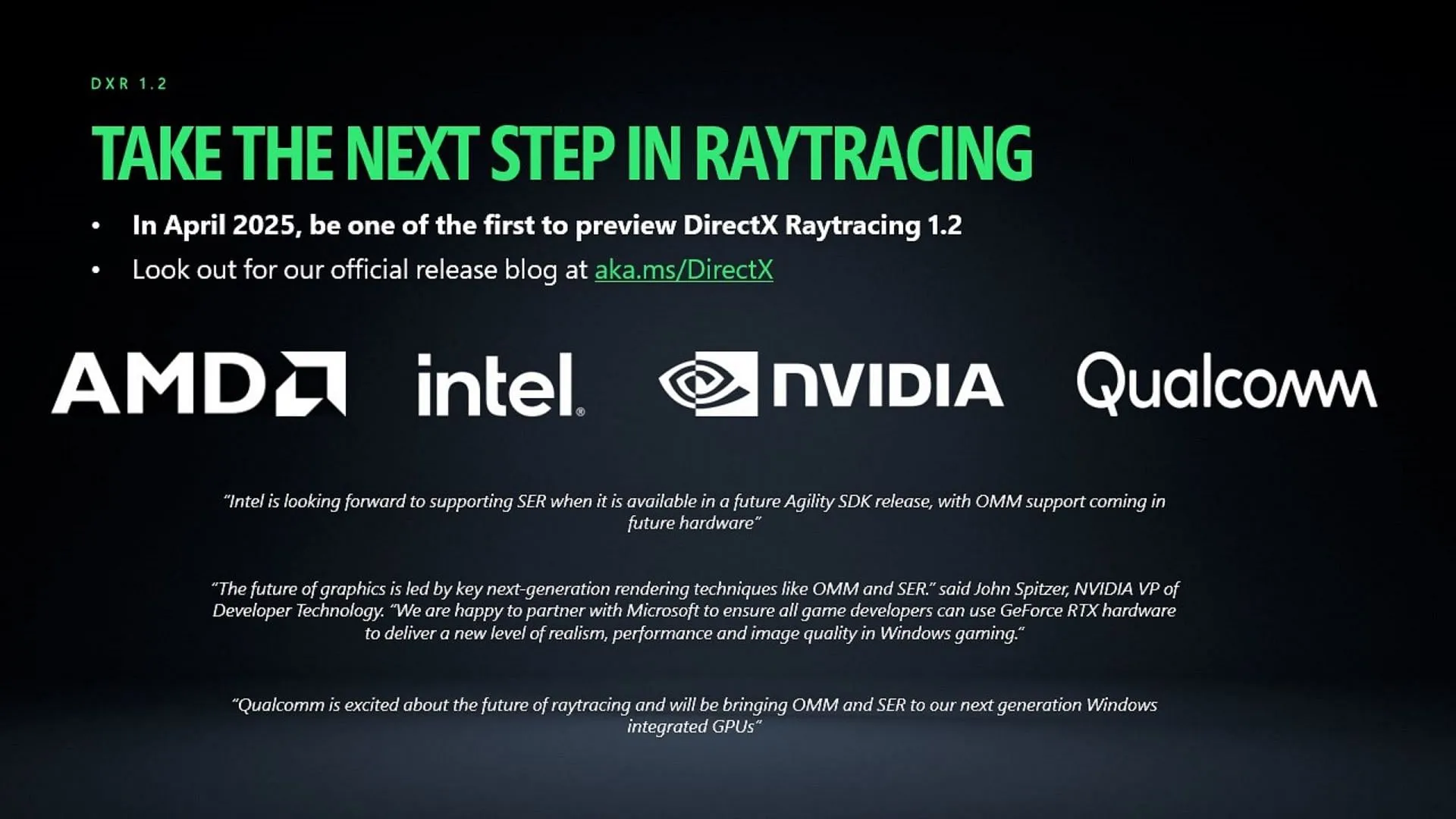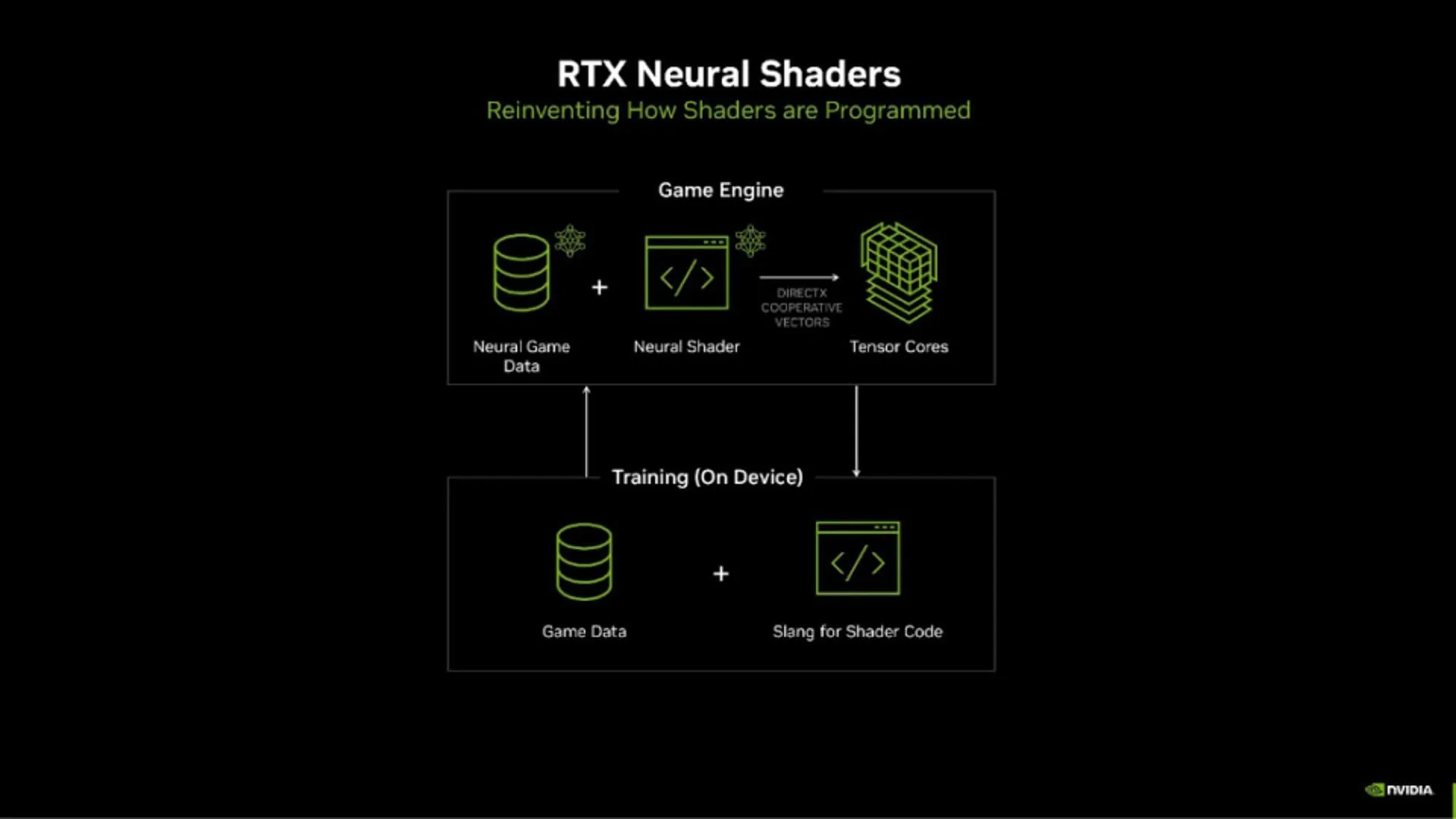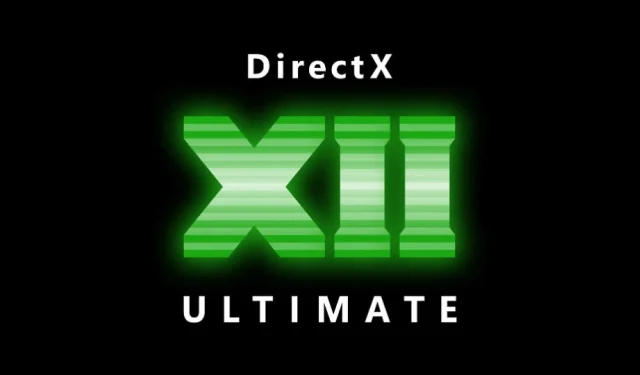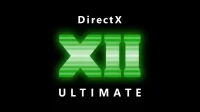The gaming industry witnessed a significant milestone in March 2018 at the Game Developers Conference (GDC) with the introduction of ray tracing technology for the DirectX 12 API. However, it wasn’t until November 2018 that the first game utilizing this sophisticated rendering technology, Battlefield V, launched. Players were captivated by the stunning reflections and dynamic lighting effects; nevertheless, this feature was initially compatible only with Nvidia’s RTX 20 series GPUs.
Over the years, support for ray tracing has expanded to encompass a range of modern graphics cards from leading manufacturers including AMD, Nvidia, and Intel. Despite these advancements, enabling ray tracing continues to substantially impact game performance—a challenge that remains prevalent as we enter 2025. In response, Microsoft has dedicated efforts to enhance this technology.
At GDC 2025, Microsoft unveiled DirectX Raytracing 1.2, which promises to revolutionize the gaming experience by significantly boosting performance while delivering enhanced visual fidelity.
Enhanced Performance Capabilities in Ray Tracing

With the launch of DirectX Raytracing 1.2, Microsoft introduced two groundbreaking techniques that promise substantial improvements in ray tracing performance:
- Opacity Micromaps: This innovative approach optimizes ray interactions with the game environment by precisely managing opacity data and shader calls. It offers an impressive performance boost of up to 2.3 times, while maintaining visual quality and reducing rendering costs.
- Shader Execution Reordering: This technique strategically organizes similar shader executions to minimize the strain on the rendering pipeline and decrease performance divergence, potentially doubling the processing efficiency of ray tracing shaders.
These enhancements make it feasible to execute full path-traced games on a broader range of graphics cards, transforming the landscape of gaming performance.
Next-Generation Photorealistic Graphics Through Neural Rendering

Neural rendering represents the future of high-quality graphics in gaming, with Nvidia leading the charge in this innovative field. By utilizing neural textures, developers can produce photorealistic visuals that not only enhance the aesthetic quality of games but also lower memory usage.
This technological advancement could drastically improve the performance of graphics cards with limited memory, such as the Nvidia RTX 4060, which faces challenges in high-demand gaming scenarios.
Initially presented by Nvidia at CES 2025, this cutting-edge neural texture technology was soon followed by similar announcements from AMD. Microsoft is now set to incorporate these advancements into Shader Model 6.9, releasing concurrently with DirectX Raytracing 1.2, ensuring all GPU vendors can leverage this technology unrestricted.
Here are some key advantages of adopting neural rendering and cooperative vectors:
- Neural Texture Block Compression: This method effectively compresses texture data while preserving visual integrity, leading to a tenfold improvement in data inferencing performance when paired with cooperative vectors.
- Real-Time Path Tracing: With the introduction of neural supersampling and de-noising, DirectX Raytracing 1.2 makes real-time path tracing more accessible to an array of graphics cards while minimizing performance overhead.
- Neural Shading SDK Support: Nvidia’s Neural Shading SDK will facilitate DirectX support and employ cooperative vectors, enhancing visual realism without inflating rendering costs.
Additionally, Microsoft has enhanced its DirectX profiler debugger, PIX, to better accommodate the features of DirectX Raytracing 1.2. The updated user interface aims to elevate the overall development experience.


